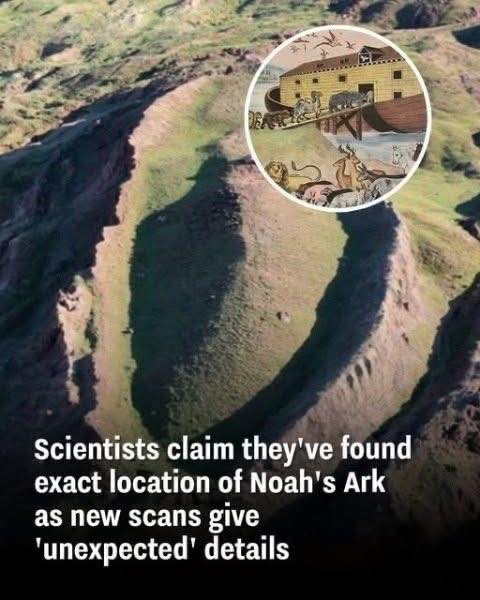Scientists Say They’ve Found Noah’s Ark’s Exact Location
American researchers now claim they’ve pinpointed the exact location of Noah’s Ark using ground-penetrating radar.
The Ark’s Biblical Origins
According to the Bible’s Book of Genesis, a massive flood threatened all life on Earth. Only Noah’s handmade ark, carrying pairs of every animal, survived. Believers estimate the ark stretched about one and a half football fields in length.
New Evidence in Turkey
Now, scientists believe they’ve uncovered the Ark’s possible remains in eastern Turkey. The discovery site lies roughly 18 miles south of Mount Ararat, the same region the Bible says the ark came to rest.
Boat-Shaped Formation Found
The research team focused on the Durupinar site, a naturally boat-shaped mound measuring 538 feet long — the same length described in the Bible. Radar scans revealed a 13-foot tunnel running through the center.
They also found underground layers and what appear to be central and side corridors. These details match Genesis 6:16, which mentions “lower, second, and third decks.”
Expert Reactions
Andrew Jones, an independent researcher, told the Christian Broadcasting Network:
“It is exactly what you’d expect to find if this were a man-made boat, consistent with the biblical specifications of Noah’s Ark.”
Jones works with Noah’s Ark Scans, a group of independent researchers pursuing scientific exploration of the site.
Signs of Human Presence
The team noticed that grass within the formation appeared a different color than grass outside. Soil tests showed lower pH levels, possibly from rotting wood, which suggests human involvement.
William Crabtree, a soil scientist with the group, explained:
“If this was a wooden boat and the wood had rotted over time, we would expect to see elevated potassium levels, changes in pH, and higher organic content — and that’s exactly what we’re finding.”
Not Solid Rock, But a Chemical Imprint
While the site doesn’t contain preserved wood, Jones believes the evidence points to a chemical imprint left behind by decayed wooden structures.
“This is not what you’d expect if it were just a solid block of rock or random mudflow debris,” he said.
What’s Next?
The team plans to conduct a core drilling survey to confirm whether the structure is truly man-made.
“That will give us a much clearer picture,” Jones added.

Sophia Reynolds is a dedicated journalist and a key contributor to Storyoftheday24.com. With a passion for uncovering compelling stories, Sophia Reynolds delivers insightful, well-researched news across various categories. Known for breaking down complex topics into engaging and accessible content, Sophia Reynolds has built a reputation for accuracy and reliability. With years of experience in the media industry, Sophia Reynolds remains committed to providing readers with timely and trustworthy news, making them a respected voice in modern journalism.


